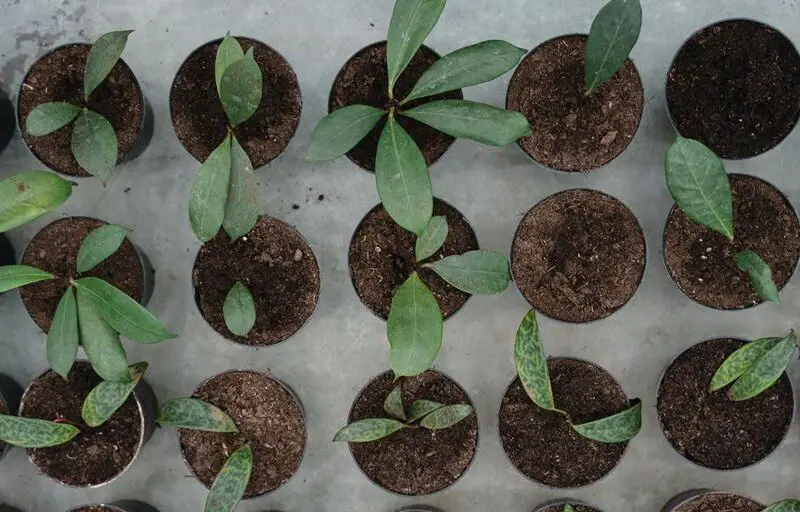
How To Compost Food Waste At Home
The problem of improper use and processing of food waste is one of the most important problems of mankind. Our task is to use this resource and prevent it from becoming trash. And the first thing we should strive for, in addition to the elementary reduction of this waste, is to learn how to independently process our household food waste into organic compost. In this article we will tell you what compost is, how to make it at home, and how to use it in the future.
What is compost?
Compost comes from the decomposition of organic waste. As a result of the aerobic process (that is, the supply of oxygen during periodic mechanical stirring), a free-flowing, loose mass similar to the earth is obtained. Moreover, as a result of the work of microorganisms and bacteria, this mass is saturated with useful elements: such as nitrogen, phosphorus and potassium. Compost is widely used among farmers and gardeners, as it is the best fertilizer for plants, lawns and gardens. There is a wide selection of organic and chemical fertilizers on the market. The price depends on the quality, naturalness and safety of the product. But just like making dinner, making your own compost gives you quality assurance and complete control over the process.
Benefits of composting food waste at home
As mentioned above, making your own compost is a guarantee of quality. It also saves the household budget, as the best compost is very expensive. Not to mention that we overpay anyway for the brand, brand, advertising and packaging. It is also worth highlighting the following benefits of home composting:
- Eco-friendly recycling of food waste. By doing so, you are helping the planet and reducing your waste collection bills.
- Storing organic waste in one place helps keep your household tidy.
- Composting, like preparing food, is fun and challenging.
Types of home composters
Making an impromptu composter will suit large households. If you own a large area of land and can build a composter at least 15 meters from your home. For rotting waste is a smell. Nevertheless, if you have a small area of land, or live in an apartment, do not be discouraged, you can still compost without hurting your nose with the pungent smell. Here are some examples of composters available on the market:
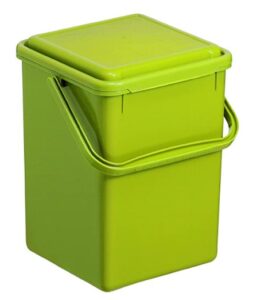
1) Rotho Bio composter , 9 liters (23.0 x 22.5 x 28.0 cm). Will fit perfectly into the kitchen of a small family. Convenient to use, no foreign odors. At a cost – about $ 5. Of the minuses – it is made of plastic.
2) Thermo garden composter , 480 liters (89 x 89 x 80cm). 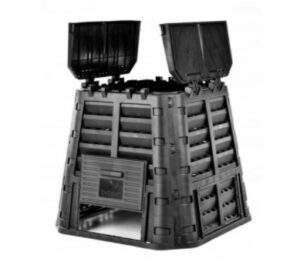 With it, you can easily compost all year round. Thanks to the thermo function, the composting process is much faster. In addition, it isolates unpleasant odors. The cost of this composter is about $ 30. A small investment in a good investment.
With it, you can easily compost all year round. Thanks to the thermo function, the composting process is much faster. In addition, it isolates unpleasant odors. The cost of this composter is about $ 30. A small investment in a good investment.
3) You can also build your own composting structure, or buy a ready-made COMPLEX 700 700 Eco 500l for only $ 14.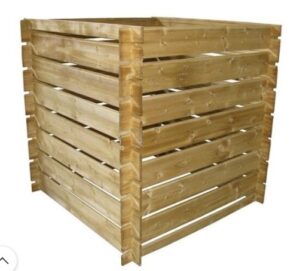
Dimensions: 80x80x80cm
4) Don’t like to waste the time and can’t wait to make your own compost? 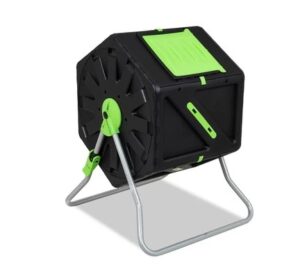 Then pay attention to the similarity of THERMOMIX among composters. You just add the ingredients – and he, the Garden Point rotary composter , does the rest of the work for you. Thanks to the constant mixing of waste (which, by the way, you can turn it on and off at will) and excellent ventilation, the composting process becomes much faster. You can easily make compost in 3-4 weeks !!!
Then pay attention to the similarity of THERMOMIX among composters. You just add the ingredients – and he, the Garden Point rotary composter , does the rest of the work for you. Thanks to the constant mixing of waste (which, by the way, you can turn it on and off at will) and excellent ventilation, the composting process becomes much faster. You can easily make compost in 3-4 weeks !!!
Dimensions:
- 70 liters (80x43x50cm) ~ $ 65.
- 2 x 70 liters (76×62.5x63cm) ~ $ 100.
- 105 liters (77×52.5×57.5cm) ~ $ 75.
- 2 x 105 liters (73.5x60x93.5cm) ~ $ 125.
We will write a detailed review of how to choose the right composter for your particular case in a separate article .
How to make high quality compost
Are you familiar with the concept of a balanced diet? It lies in the fact that the human diet was as varied as possible. The more varied, the greater the likelihood of getting all the necessary minerals and vitamins into the body. Composting is the same story. Of course, you can compost with a single herb or potato skins. And yes, it will be usable too. But the highest quality compost is directly dependent on the ingredients. The more varied the added organic waste, the better! The word “compost” itself is translated as “composite”. Therefore, it must have many ingredients. We will talk about what can and cannot be added to compost later in the article.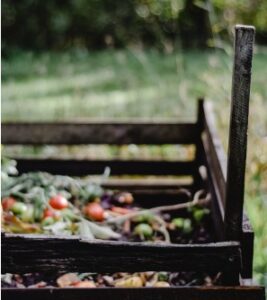
Nevertheless, there must be some formula, a basis. With which you can improvise at will. We are constantly comparing composting to preparing food – and this is not easy, because there are direct parallels here. Let’s say you are making pasta. Which type of pasta you choose is the base. And what filling you fill it with is a matter of improvisation. So the filling in the compost is a variety of food waste. And the pasta is the base. And here is one of the possible recipes.
So, at the bottom of the container, lay the scraps of branches, chips – they act as drainage. Further, the main rule is that each layer of waste should be 30-50 cm, then a layer of earth 5-10 cm, then again the ingredients.
The more often you mix the resulting mass, the faster you can get compost. Thus, after 12-18 months, the fertilizer will be ready . In a separate article, we will talk about how to make compost in 2 months and talk about all kinds of accelerators.
What to put in the composter?
There is no single opinion on this matter. Everything, like cooking, comes with experience. However, we are of the opinion that any organic waste is good for composting. With the fact that some of them (especially those that are difficult to decompose) should be kept to a minimum, which does not mean that they cannot be used as compost.
What to put in the composter?
- Leaves
- Cut grass
- Fruits and vegetables and their trimmings
- Coffee and tea bags
- Ashes from a grill or fireplace
- Thin branches
- Paper, cardboard, sawdust, natural fabrics
- Straw, sawdust.
What can you put in small quantities?
- Small bones, and leftovers of meat and fish.
- Pets litter.
- Non-heat treated egg shells.
- Citrus peel.
- Needles of coniferous trees.
How to promote rapid humus formation for rich and high quality compost?
- Add natural boosters like chamomile, dandelion, yarrow, valerian.
- Alternate layers of nitrogenous (bird droppings, grass, raw vegetables and fruits) and carbon (straw, leaves, paper, sawdust, cardboard) waste.
- Alternate layers of dry and wet waste.
What should not be put in the composter?
- Vegetables and fruits after heat treatment
- Sick Plants
- Inorganic waste such as plastics, synthetic fabrics,
- Color printed paper
- Milk products
- Dust from a vacuum cleaner
- As well as salty and fried foods that can attract rodents.
Where to use the resulting compost?
- Garden
- Garden
- Flower garden
- Greenhouse
- Feeding indoor plants
- As a basis for the soil in which the seedlings are grown.
- Lawn.
Compost can be applied both to clean soil and to overgrown with weeds.
In a separate article, we will talk about the general rules for plant nutrition and compost use, depending on the destination.
 Conclusion
Conclusion
We hope that the information received was useful and informative for you. Exactly for those who are just about to prepare their first compost, as well as for those who already have experience. Composting household organic waste is the first step in the fight against landfills, global warming. This is our investment in preserving the planet for future generations. This is a little that is available to each of us, which with the butterfly effect can change the whole world (or, at least, reduce your bills and please your houseplants J. Let’s make a RESOURCE out of food waste – NOT GARBAGE!
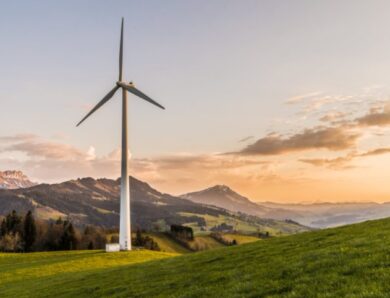
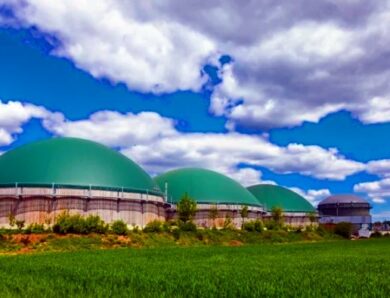


No Comment